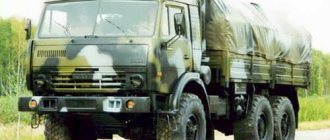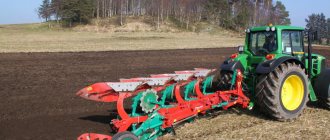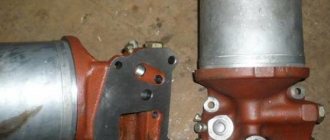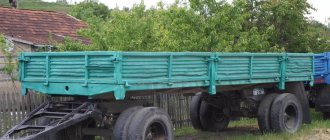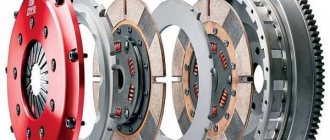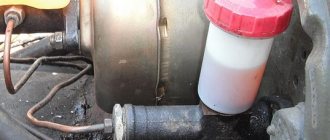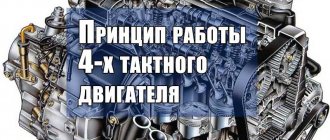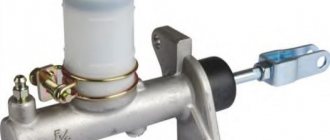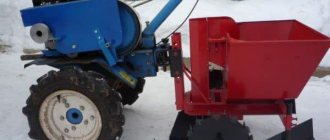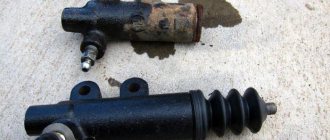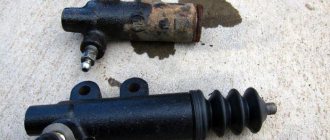The history of Man trucks
Engineer Rudolf Diesel made a great contribution to the creation and production of Man trucks. In 1893, Rudolph received a patent for a 4-stroke engine and exactly 4 years later a “compression ignition” engine was created. Thanks to this, already in 1925, the production of Man “S1H6” motor vehicles with a volume of 3.5-5 tons and a 6-cylinder engine took place. In 1944-1945 The plant in which Man trucks were produced was closed, but in 1955 Johann Friedrich's company took ownership of a plant in Munich that once produced engines for BMW cars.
Since that time, the production of Man trucks has rapidly increased, and their parts have been replaced with newer ones, such as, for example, in the 70s, instead of V-twin engines, Man trucks were equipped with 6-cylinder engines. In 1978, this brand of vehicles was awarded the title of “Truck of the Year” and then in 1985, great success came for all its manufacturers, when a separate company was created under the name MAN Nutzfahrzeug AG, which employed more than 20,000 people. Then they released the Man 2000 series of trucks. 2007 was also marked by an important event for the history of the Man brand, when the Man truck received 1st place in the Dakar Rally.
History of the MAN plant in Poland
The history of the plant began in 2005, as is customary, with a project, and already on October 4, 2007, the first truck rolled off the assembly line, in Polish red and white color, which we also did not fail to visit, see photo.
TGA 19.400 – the first Polish MAN truck assembled in Niepołomice
The plant occupies 240 thousand m2 of fenced area and 1160 thousand of total area.
The number of employees is 752 people, of which 643 are technical specialists, and 109 are office staff.
General view of the MAN plant
The Krakow plant assembles the entire range of TG heavy-duty trucks. Now the product range covers two, three and four-axle trucks of the TGS (special equipment), TGX (domestic and international transport) and TGS WW (heavy duty transport outside Europe) series of various configurations with a gross weight of more than 16 tons. Do you know how many trucks come off the assembly line a day? Almost 100 pieces! And this is not the limit. The work is organized in two shifts, each employing 288 technical personnel. The first shift starts work at 14:05, and the second shift starts at 20:22.
The plant's immediate plans are to produce 150 trucks per day. We went through test work shifts when we produced 65 and even 70 trucks per shift, which is 140 per day! At the same time, machines of various modifications and purposes come off the assembly line. How is this possible?
The plant in Niepołomice is distinguished by the fact that the assembly of trucks is built according to the type of modular production adopted from passenger car manufacturers, i.e. trucks are assembled in separate blocks: frame, cabin, engine compartment, and are delivered already assembled from other MAN plants, and the final assembly is carried out at the Krakow plant assembly of machines, this made it possible to significantly improve the ergonomics of production and reduce the burden on personnel.
Cars from the plant in Niepołomice operate throughout Europe, the CIS, Africa and ASIA, there is even an option for England, where, as is known, the cars are “right-handed”, we saw several such cars on the assembly line, but almost a quarter of the cars from the Krakow plant remain in Poland.
The plant has well-organized logistics; almost 100 trucks with spare parts are unloaded every day. Spare parts come from almost 300 suppliers, and the total monthly supply exceeds 50 million euros.
To unload, the trucks drive directly to the assembly point.
You can see how equipment suppliers unload at each assembly point; logistics are structured in such a way that all components are as close as possible to the assembly shop, for example, at the engine assembly point; suppliers of spare parts for engines unload if they supply frames , then they are also unloaded at the appropriate place, very convenient and efficient from the point of view of the production process. The supply and assembly of equipment is located practically in one place.
At the same time, for the sake of optimization, the plant does not have large warehouses; a set of components is enough for a maximum of 2 days of work. Therefore, if supplies suddenly stop, the plant will be completely shut down in 1-2 days, but will this happen? Judging by the German operating principle, only in case of natural force majeure.
Plant employees, as a rule, live nearby, in the nearest cities and villages, the salary is about 700 - 1000 euros, which is small, which explains the choice of locating the plant in Poland; in Germany, employees receive at least 4 times more. The plant has a gym for company employees, where they can relieve stress from monotonous work on a treadmill or weight machines. The plant also has its own training and production center for advanced training of workers.
Gym for MAN employees
Also, MAN, regardless of the position held by the employee, sponsors sports in any specialized institution in Krakow, this also applies to medical care. Well, in order to further motivate employees not to get sick, they introduced a bonus for those who are not sick. Therefore, leading a healthy lifestyle is beneficial.
The internal system of competitions between production divisions of MAN is also interesting. Literally two weeks after our arrival, our guide will go to participate in an internal award, where he will present the control and monitoring system that they created at the plant in Niepołomice. If the system is successful, it will be implemented at other MAN plants, and employees will receive a bonus.
Monitoring system
screen
Technical characteristics of Man machine models
| Model name | Main characteristics |
| Model TGH | Man TGH trucks are well suited for ultra-long-distance transportation and differ in size: XXL, XL, XLX. A special feature of the Man Cab XLX is its large spaciousness, where, if necessary, you can open the top hatch using a spoiler. No less practical is the man XL cabin of a single-seater truck, which, like the man XLX cabin, is very spacious and has an aesthetic appearance. Compared to them, the XXL is the largest cabin. There is absolutely no noise to be heard while driving and the interior is well thought out. |
| Model TGA | The man cabin of the TGA truck is designed for transporting construction equipment and has a weight of 50 tons. It is produced in several sizes XLX, XXL, L with a six-cylinder engine, the volume of which is 10.5 and a power of 310 - 440 horsepower. The man cabin has a height of 2,200 ml and a width of 790 ml. |
| TGS model | The Man TGS vehicle can be used for transporting construction materials, which is equipped with one of 3 cabins: LX, M and L. The Man vehicle with the M cabin has a lower cost than the L cabin, the width of which is 750 cm. All cabins of the Man truck are quite high and equipped with everything necessary, so they are more expensive than others. They have built-in six-cylinder engines and a 10.5-liter engine. The power of the TGS truck reaches 320 - 440. |
| Model TGM | Man TGM trucks have a mass of 26 tons and 8 wheelbases from 3,525 to 6,175 mm. They should be used for transporting construction cargo around the city without traveling outside of it. Body length starts from 3.9 m and ends up to 8.1 m. It has absolutely no differences from the Man TGL model and is equipped with a six-cylinder diesel engine with a power of 240, 280 and 326 horsepower and a high-quality engine, the technical characteristics of which meet Euro-3 environmental requirements. |
| TGL model | During cargo transportation, Man TGL is able to withstand heavy loads. Its interior has a filter that specifically purifies the air during ventilation or heating and two driver's seats with suspension. Also, the technical advantages of the man TGL truck are: a 4-cylinder engine, power 150, 180, 206 horsepower and a 6-liter engine. |
Man trucks have gone down in history as one of the most famous and popular truck brands in the world. Each of them, depending on its model, differs in technical characteristics and purpose.
So, how are MAN trucks assembled?
Let's start with a general plan (see photo). The plant has two assembly lines; each has several assembly stations: 13 posts on the first line and 40 posts on the second.
In the photo, Plant Manager Heiko Kayser shows the assembly lines of the plant
The assembly process begins with the frame, it arrives at the factory already assembled, all that remains is to paint it. By the way, painting is possible in any color at the request of the client.
After painting, the frame is sent to the conveyor
Next, the frame is installed on an electric conveyor cart and sent for assembly.
Frame on the conveyor
The cart itself is also an interesting invention. The maximum load it can transport is 10 tons, at a speed of 30 meters per minute. Each trolley has a rechargeable battery that is charged inductively
Automatic trolley on a MAN conveyor
To prevent employees from entering the path of trolleys, it is marked with signal markings.
Video: self-propelled carts
The first stage is applying a VIN number to the frame, the code of which encrypts information about the manufacturer: the plant code and characteristics of the future truck, such as the number of axles, year of manufacture, etc. The VIN of the Krakow plant, like German trucks, begins with the letters WMA, and the last letter in the number is P (Poland).
Applying a VIN number to the frame of a future MAN truck
An installation protocol is also attached here, which will be filled out by the plant employees as they are completed. Thanks to this document, you can find out important information about which components were installed, by whom and when. Each completed stage is signed by the responsible employee. This is a standard procedure for all MAN plants.
We move on and install electrical wiring, pneumatics, and install attachments.
The next stage is the installation of springs, joining of axles, of which there can be from 2 to 4. There are two assembly points for this: for the front and rear. What does the process look like? The chassis arrives along the conveyor on self-propelled trolleys, at which point the frame is lowered from above. The two modules are joined, and at the next post everything is fixed with bolts. As we were convinced, today no plant has such a modern installation of these elements.
Video: the process of moving the chassis along the conveyor
We install the transmission shaft, which we receive directly from Munich. Then the frame is sent for engine installation, and we go to the employee training center.
Then the frame is sent for engine installation.
The center is located on the second floor, from where you can take overview pictures of the entire production.
General view of production
First conveyor line
MAN Logistics and Spare Parts Department
The logistics and spare parts department is located centrally, almost all of these spare parts will be installed on the machines on the same day
Second conveyor line
MAN Training Center
The training center trains new employees to work at all stages of production. It is important that workers can move to another site at any time and help colleagues if difficulties arise at any stage of the assembly or if there are not enough workers. Here they teach how to work with tools, how to correctly take parts and install them. All employees must learn their responsibilities in a particular area of production.
Exercise equipment
An interesting set of exercises before starting work. All employees involved in production, like athletes before a game, should “warm up”, warm up their arms and torso, this helps to avoid injuries and improve concentration.
IT division of MAN
We continue our excursion and pass by the tire fitting area; we will install the wheels themselves on the trucks a little later, after installing the power units.
The cleanliness of the factory is impressive!
We move on to the area where the engine is prepared for assembly. At the assembly site, the engine comes directly from suppliers in Nuremberg and is unloaded directly from the machine onto the production line.
The heart of a MAN truck
Have you prepared? Have you installed the gearbox? We send it on a self-propelled cart to the assembly site.
The MAN engine is sent for assembly
This is the second line, on which there are 40 assembly points, of which 36 are production and 4 are buffer, and there are also three quality control points on this line.
Just for quality checks, on the first line before the paint shop and the “final” line before the “green line”, but more on that later.
Movement along the conveyor takes on average 56 hours for a heavy truck and about 36 hours for a light one. And here is the most difficult moment, can you imagine how difficult it is to balance production processes when trucks of different models and modifications move along the conveyor at the same time?
Let's see how to install the engine on the frame?
This can be done slowly, because... This is the only place where the future truck stands still; in other areas, there is a continuous movement of the truck from one area to another.
Using the run-beam, we lower the engine onto the frame
We stretch all connections
And it is not surprising that a stop is needed here; installing an engine is a serious matter, there is no room for haste. All tools are at hand, mainly pneumatic impact wrenches with automatic torque settings. Moreover, the equipment control system checks what modification of the car is parked on the site and automatically sets the parameters for tightening, shows the number of required connections, and after installation, checks the connections, which gives a 100% guarantee that everything is done correctly. Marvelous!
Installation, depending on the post, takes from 6 to 20 minutes of working time and in the near future, this time will be reduced by another three minutes. During our visit to the plant, work process optimization specialists were working here.
It's time to install the radiator...
Installing the radiator
The employees are very original personalities, please note that you can work at the plant in shorts, without a headdress, in general, very comfortable conditions.
MAN plant employees are original personalities
We asked if this was against safety regulations, to which we received the following answer:
— Recently, the summer in Poland has been very hot and we have allowed employees the opportunity to choose clothes; they can wear either short or long trousers. This is their choice. We have an external clothing service that delivers it to us, picks it up, and washes it, including shoes. As a rule, the corporate clothing of employees is gray, and you can recognize the site foreman by an orange T-shirt, but if you see a yellow T-shirt, then this is the deputy head of the workshop.
This is the color gradation.
As the employee conducting the tour told us, a medical specialist was recently called to the enterprise, who studied all stages of work on each section of the conveyor, analyzed the loads and issued a list of recommendations on how best to hold tools and install equipment in order to reduce the level of stress and fatigue . And it worked! A good example for other manufacturers.
Are we installing the cabin?
The cabins, as we said, come from Munich, completely ready for installation. We lower the cabin onto the frame, secure it, and do the electrical work.
Installation of MAN cabin
Also, in this section we fill in technological fluids: into the pneumatics for raising the cabin, the system for controlling the chassis, in other words, the hydraulic drive and fill 10% of the fuel into the tank, it’s time.
Fill 10% fuel into the tank
The container itself with the tank is located outside the plant; only the pipeline approaches the post.
Electrics of the cabin and chassis, soon all the wires will take their place
The cabin is in place, there's gas in the tank, it's time to put on the wheels!
Next comes one of the “quality gates” - QUALITY GATE, they can be recognized by their blue color. We check everything according to company standards, but almost all the work is done automatically.
Quality Gate - QUALITY GATE
We ask if employees can listen to music or radio in the workplace.
– Yes, this is possible, only the equipment (radio receiver) must be checked to see whether it can be located in this place. If everything is normal, then such a device receives an approval label, which is applied to the body so that there are no problems with insurance in the future.
We were also told that the company pays close attention to the ergonomics of production and listens to the opinions of the workers, so several years ago, after communicating with employees of the electrical equipment installation section, these platforms were built at the plant, for ease of work because Without them, it was difficult to reach some parts of the car.
The platform was made at the suggestion of employees
It is important to communicate with staff at the MAN plant; this helps to introduce interesting innovations, and the workers themselves feel responsible for the work process.
Every time if some emergency situation occurs at production that threatens the life of an employee, an analysis of what happened must be done within 24 hours: what happened, why, ask all departments at the plant if they have such a danger and introduce precautions so that such the situation did not repeat itself.
Installation of electrical equipment is now easier
Well, it's time to start it up and test it? In this area, trucks are already starting to move on their own, so we have to be very careful. So, we are reaching the finish line, the last two stages. The first is for two or three axle machines, the second is for four-axle machines.
An additional check of the chassis is carried out from the inspection pit, the paint is adjusted, the connection between the cabin and the frame is checked, and technical information for calibrating the tachograph is also collected here.
A stand for testing the chassis of MAN trucks; on such a belt you can accelerate a car to 140 km/h.
The car is being accelerated at special stands. Next we check the pressure in the systems, wheel alignment, brake system and ABS, exhaust toxicity, smoke, etc.
All checks are carried out according to Volkswagen standards, do not forget that this is the main shareholder of MAN. This is a standard check for all MAN, Scania, Fiat, Volkswagen and Skoda plants. This is a completely independent audit of invited auditors, which no one can influence or, as we usually do, “agree.” This is an independent legal unit. Additionally, there is a practice of cross-checks, for example when specialists from Scania, located in Germany or Austria, carry out checks here, and employees of the MAN plant in Niepołomice check there.
— We must be sure that we have the same standards for producing cars, because the inspection and evaluation system is the same for everyone. Therefore, there is no special sense in choosing a MAN truck of German, Polish or Russian assembly, the guide convinces us.
Final inspection of MAN trucks
At the same time, the MAN plant in Niepołomice can boast of the experience of its specialists, who have been training employees of other plants for several years, regularly conduct master classes, and even fly to Brazil, where they also conduct training at one of the MAN plants.
